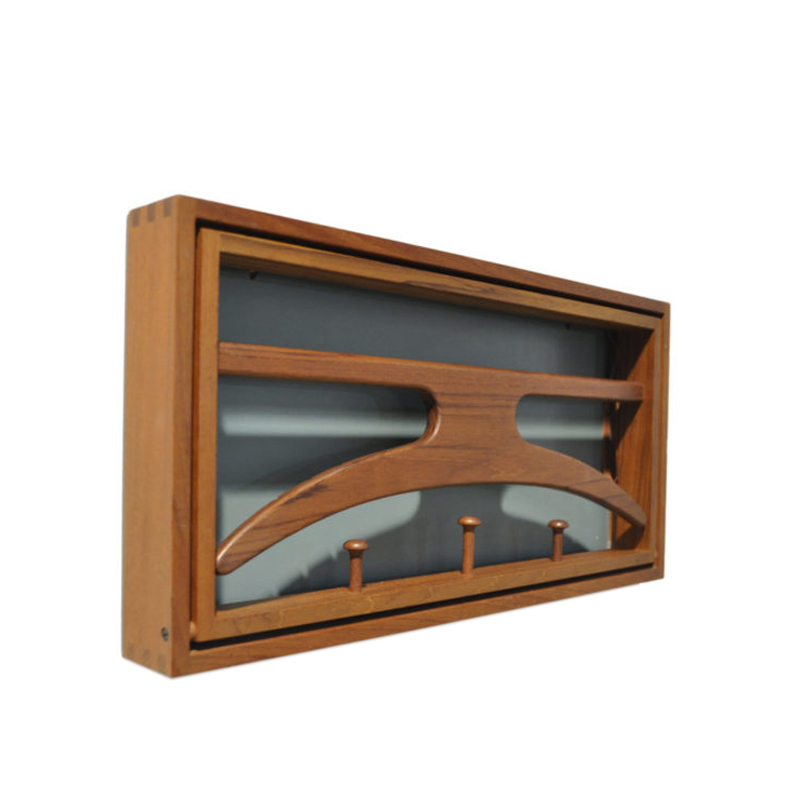For years now my attention has been on and off again in regards to the resurgence of interest for prefab architecture. I briefly worked with a leading prefab architect helping with marketing. Time after time I would hear clients say, "will modern prefabricated architecture ever become the cost effective solution that it claims to be?" Maybe not in those specific words, but everyone has been on the edge of their seat for a decade now wondering if this technology will push through for them. Perhaps I should note that I am in the United States; I realize prefab has done more overseas.
Every time I faced with this question, I have to answer "no." Modern prefab architecture has simply become a niche market, usually for those wanting vacation houses or for the couple living in an insanely expensive market with decent jobs (usually the only time savings can actually occur).
Whether you want to ignore it or not, the fact remains that mid century modernism promised something more. The Case Study House program promised more. Are we not being creative enough? Or resourceful enough?
Although I admit I have not finished the article that I am about to mention, I did recently run across a story about an architect who used your typical mobile home technology. Is this a solution? I am specifically curious about the possibilities.
What would be the drawbacks for reusing old trailer homes to create a new structure? I am assuming that there would be a lack of insulation, thin walls, and other quality issues. Would the frame itself be a worthy structure to start from? Could you make it a permanent home on a traditional foundation?
The very nature of mobile homes, with their geometric one-size-fits all attributes, seem in line with modernism. However, it's the execution and the social expectations that might have put them off to the point where designers may be overlooking a viable solution to modernism's promises: modernism for the masses.
I actually like the idea of buying two or three single wide homes and forming them into a courtyard assembly ... cladding them with no maintenance materials like MDF and cutting out large expanses of glass ... perhaps even long horizontal wood slat privacy fences. Can we do more with less?
Please forgive any ignorance I may have; That is the very reason I am asking and opening this discussion. I have very little knowledge of construction.
Can someone shed some light on this? Is this not being done because it does not make structural sense, or are mobile structures simply a social taboo?
Please forgive any typos or grammatical errors .... I am tying this at work under the radar!
You are working under the...
You are working under the radar, and unfortunately as well under the ruse of a fire or a tornado, among other things, very potential catastrophes. Mobile/trailer homes, in most cases in their basic forms, resemble nothing even close to sound structures. They are a shoebox not even safe for shoes. I am not an architect, but reside in Nebraska, where big wind is king.
Well, yes, that is the...
Well, yes, that is the consensus. But it's easy to dismiss it right away. Are there methods to make it a viable solution. I could be an idiot, but you'll never know unless you ask. Is there a way to attach it to a permanent foundation and perhaps add another roof structure? Would this help? Are there any actual architects or engineers on this forum?
Architects have already been using shipping containers. How is a trailer any more/less functional for this method?
It's difficult to put down roots
when your home is on wheels. 🙂
Social issues aside.
You might also want to consider that if you are talking about so called "single wides" arrayed in a u shape courtyard configuration, the individual wings are whatever the allowable over the highway width is. What could that be, maybe 10 feet. It would be like living in three long narrow coffins. 🙂 No thanks.
They are also notoriously difficult to insure as fire rips through them in a flash.
Interesting idea - Of cause...
Interesting idea - Of cause you can install trailers on a permanent fundament. But I don't think mobile homes are very flexible when it comes to modifications (cutting out windows, joining them together) or provide enough insulation. You would also need a space for heating/ air conditioning and connect all trailers to it, as you'd need to join electric systems. Many technical problems to solve. And would you like the ceiling height?
Maybe just do it the Breuer-way!
http://www.breuertrailerhouse.com/
The allowable width for the...
The allowable width for the highway is substantially wider than 10 feet! Some singles go as wide as 16 feet. In addition, they transport double wides all the time, which I am assuming, is double the width.
I am not completely sold on a single wide, but the fun is seeing how far you can take the least of them. Couldn't two singles also overlap on half of the structure, making a big square living/dining/kitchen, with bedrooms on the wings that jut out?
Couldn't you use fire retardant materials for cladding? DOn't just react, think about it. Creatively, could you make it a viable solution? Could you alter the structure to be up to code?
In regards to the ceiling hei...
In regards to the ceiling height. No, I wouldn't. The project I scanned that employed the use of the trailer implemented the addition of a sloped shed roof raised slightly above the structure with glass added between the sloped roof and structure. It was very pleasing aesthetically and gave a new dimension to the box.
In regards to insulation:...
In regards to insulation: wouldn't it depend on your climate as well? How much insulation does the Farnsworth or Glass House have? Basically none right?
Could you not battle the need with smart landscaping solutions, creating lots of natural shade (keeping the house cool)?
insulation -
yes, and i forgot those people "wintercamping" in switzerland, that should not be a problem.
When you mentioned the sloped roof and glass, I thought about placing the trailers inside a simple steel/glass box, which could be opened up in summer, creating a camp-like feeling. Inside the trailers you'd have intimate spaces, the inbetween could be used for living/dining etc as a more open light space. Like a house inside a house?
just an idea that came to my mind...
As you know
I am a product designer, not an architect...this being said, I think it is basically a matter of method. For decades now architects have been trying to design prefab homes, and as you point out, with little success. The basic problem is that the methods architects using in designing are not suitable for industrial production or prefab. Often, too often as a matter of fact the differences are ignored and yes, architects have often successfully designed furniture, but it was never very easy to make nor did it come on the market for a reasonable price...unless Target sources it in China.
Often architects have claimed that it is a question of scale, it is not, a substantial size Airbus is often described in terms of its relationship to a football field, not to a chair.
As far as I am concerned we will have decent prefab homes the moment industrial designers are asked to design them. Maybe something for the declining car industry? imagine, a house were doors close with the precision and the airtightness of a car, where you sit as comfortable and adjustable as in your car, as well insulated as your car, with windows that open and close with a button and a GPS to tell you day and night where you are! and with as much models to choose from.
But there are other differences than methods between the way designers design and architects design. For quite some time now, say almost a century architects have been designing the look of homes, the planning of the interior etc. almost always without any or very little interest for the engineering part, leaving that and all the major decisions that come with it to engineers, structural ones for the structure, others for electrical, air conditioning, lighting etc. etc. Recent attention for the superficial features of products has started a similar movement in design, but the vast majority of designers has still be educated in a much wider range of technologies, and a better understanding of there use.
So, yes, I think it is possible, we just have to ask the right profession....I understand... you asked architects not designers
First off, I don't think I was simply reacting.
A double wide maybe 16 feet doubled but no one is transporting it as one complete piece. They are usually assembled from two halves on site, There isn't a roadway in the US that would allow anything even approaching 32 feet wide to be transported over any kind of appreciable distance. 32 feet is close to two and a half lanes on most highways. Yes whole houses are moved, but usually over a relatively short distance with much power-line removal, expense and in the middle of the night.
And even if you could transport 32 feet, say from a factory in one state to a building site in another state, transportation costs would be prohibitive pulling the less than ideal drag coefficient of a large non-aerodynamic "Brick" down the highway.
But, is it possible? Sure, anything is possible, but I would agree that the construction methods involving trailers would make modifications, like large expanses of glass windows, insulation, AC ducting, problematic. Composite-panel prefab construction methods seem like a more viable alternative.
If you need any help, please contact us at – info@designaddict.com









